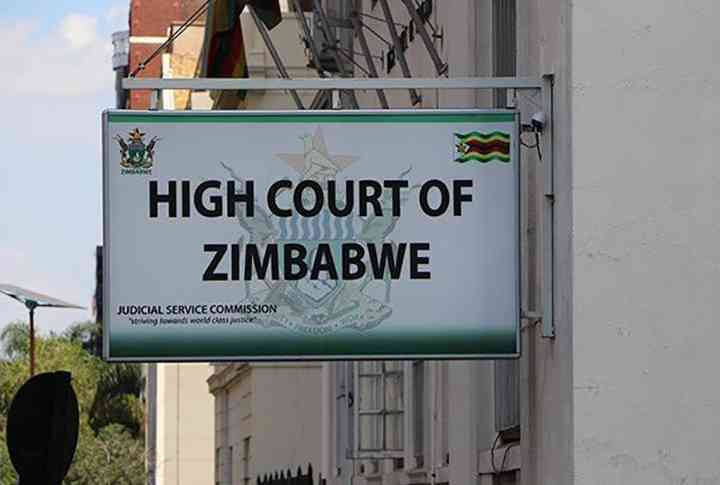
The fast-track land reform programme (FTLRP), implemented in year 2000, resolved some of the historical land questions obtaining in Zimbabwe while also raising new questions related to land tenure security, gender, youth access to land as well as the transferability of land to widows and youths.
By Freedom Mazwi, Tizai Mauto and Walter Chambati
With the government of Zimbabwe and the Food and Agriculture Organisation (FAO) leading the process of crafting a National Gender-Sensitive Land Policy-it is an opportune time to raise awareness on youth challenges and proffer solutions.
From addressing racial land questions to unravelling new land questions.
A number of studies have demonstrated how the FTLRP restructured land ownership patterns and addressed land ownership inequities resulting in 45% of the country’s most fertile, arable land, previously owned by 4 500 white commercial farmers, being transferred to the black landless, who were historically marginalised by colonial and post-colonial policies.
However, despite resolving the racial and colonial land question, the FTLRP failed to adequately address the gender question in terms of land ownership as has been argued by a number of studies.
Furthermore, the question of youth access to land and farm workers’ land rights was also not addressed by the FTLRP.
Making it difficult for youths and women to access land were limited financial resources which counted during the selection of land beneficiaries under the A2 model which required applicants to show proof of funds and business plans before the applications could be considered.
- Chamisa under fire over US$120K donation
- Mavhunga puts DeMbare into Chibuku quarterfinals
- Pension funds bet on Cabora Bassa oilfields
- Councils defy govt fire tender directive
Keep Reading
Under the willing buyer-willing seller framework, these groups were also constrained by lack of resources to purchase land.
Landlessness is a major challenge among youths and women, with over 10 000 of them on the Ministry of Lands, Agriculture, and Rural Resettlement’s waiting list.
The next section focuses on how youths are negotiating access to land in the resettlement areas and the challenges they face.
Youth land access in Zvimba, Mashonaland West Province Children who were around 10 years old in the year 2000 when the FTLRP started are now in their youth and aged around 30.
The prevailing state-based tenure mediating land relations for the majority of resettled farmers, only allows for land sub-divisions with consent from the lessor thus limiting possibilities of land transferability to the youths who now constitute 25.7% in the country according to a 2012 national census.
This is unlike the communal areas where parents, through village heads, are allowed to sub-divide housing or agricultural land to children for the establishment of their own homesteads.
Enabling land sub-divisions or transfers for the youths is essential given the obtaining socio-economic environment characterised by de-industrialisation, unemployment and repeasantisation.
Most youths have not been absorbed into formal employment post FTLRP as a result of the harsh socio-economic climate that forces them to turn to agriculture to eke a living.
Land is therefore a critical resource towards the social and economic empowerment of marginalised youths.
At Riverside Westwood farm, located in Banket, Zvimba, it was reported that the farm has 24 formal A1 villagised plots with each household owning 6ha arable land and 14ha grazing land.
The pattern is similar in most resettlement areas falling under natural Region 2.
Most of the land beneficiaries settled on the farm between 2000 and 2003.
From in-depth interviews conducted with extension officers and youth farmers, it emerged that out of a total of 24 plots on the farm, only four are owned by youths, a phenomenon reflecting the marginalisation of youths in land access in the resettlement areas.
The most common strategy employed to gain access to land by youths was the instumentalisation of highly influential parents.
Here it was observed that all the youths who own land had benefitted through their parents who were shifting to bigger pieces of land under the A2 scheme.
The parents had initially been allocated A1 plots at the commencement of the FTLRP but as the applications for larger A2 farms were approved during the later stages, they made sure that the A1 farms were transferred to their children.
From a gendered perspective, all youths who benefitted from land transfers at Riverside Westwood were males, a development which confirms that patriarchal relations still persist in modern day Zimbabwe despite concerted campaigns by the government of Zimbabwe, women, lobby groups, and land and agrarian CSOs for gender-equitable access to productive resources including land.
Another strategy weaponised by youths to gain access to land in resettlement areas was found to be electoral politics.
Since youths are a critical constituency in electoral politics, the study observed that a number of youths in neighbouring farms had been allocated either 1ha or 2ha of land for residential and agricultural purposes by traditional leaders working in concert with local politicians.
Youths are a critical constituency demographically and many politicians contesting either local authority or parliamentary elections often appeal to the rural youth’s constituency through addressing land grievances.
This finding is not only restricted to Zvimba, but has also been observed in Goromonzi and Hwedza districts A contrasting view was given when it came to land tenure security between the youth farmers who gained access to land through the influence of their parents on one hand and a group of youths who got pieces of land through traditional leaders and local politicians on the other.
The first group was more secure when compared to the latter because it had land offer documents and did not report eviction threats.
This group perceived the land as theirs and did not envision the possibility of any actor dispossessing them.
Perceptions of farmers are critical when considering issues of tenure security.
The picture is somewhat different for the youths who were resettled by traditional leaders and politicians as they are undocumented (meaning they don’t possess land offer letters or land permits).
A key informant reported that from time to time, the youths are often reminded during the post-election period that they are illegally settled.
Further complicating their position is the fact that they were settled on grazing lands.
According to a recent study, these land beneficiaries, alongside other authentic beneficiaries, have been facing eviction threats since 2018.
The government has been on a campaign to drive out such beneficiaries and according to a Zimbabwe Land and Agrarian Network (ZiLAN) preliminary assessment report based on media reviews, a total of 20 000 occupants were threatened with eviction while 10 000 were evicted to pave way for agrarian and mining investments since 2018.
Tenure security for the youths who were settled illegally is thus tenuous.
Important to highlight, however, is that there is an on-going process of land reform from below in the countryside which is addressing youth land grievances.
Youth Access to Agricultural Finance and Inputs in Zvimba While farmers, in general, have experienced challenges in accessing agricultural finance post FTLRP, the condition of youths is more precarious.
None of the youths interviewed were engaged in contract farming (tobacco and soya bean) or had received any form of loans from private commercial banks.
Activities such as fishing and petty trade provided the much needed finance for the young farmers to continue with agricultural production.
Apart from these self-financing mechanisms, the state-led contract farming programme, introduced in 2017, was critical in financing production for the youth farmers.
Almost all the farmers interviewed highlighted that for the past three agricultural seasons, maize production for domestic consumption and market sales has mainly been produced through the state-led command agriculture.
None of the youths interviewed felt there was marginalisation in accessing input loans under command agriculture.
However, with private commercial banks, they stated that collateral requirements placed them at a disadvantageous position since they do not own property with title deeds unlike the older generation.
The major challenge faced by youths, which is also faced by all farmers under command agriculture, is the late, inadequate supply or even the non-provisioning of inputs by the state which ultimately negatively impacts yields, placing farmers on a debt spiral due to failure to service loans provided by the state.
Emanating from the above challenges, youths highlighted that they failed to repay input loans advanced to them by the state owing to poor yields thus leaving them indebted.
This development has made it impossible for them to access inputs under the programme for the 2019/2020 and the 2020/2021 agricultural seasons and given the deteriorating economic environment, hyperinflation as well as economic hardships
Conclusion
The research brief examined the dynamics surrounding youth land access in Zimbabwe as well access to financial resources, inputs, and capital formation among youth smallholder farmers.
The brief highlighted that while the FTLRP largely resolved the historical land question brought about by the colonial conquest, the programme arguably failed to address the gendered land ownership imbalances and new questions have emerged on unresolved youth land access and intergenerational land transfer challenges.
Now more than ever, there is crisis of how youths who are resident in resettlement areas will be accommodated, since the current land tenure laws do not permit land subdivisions or land transfers. Tenure security for the majority of the youths who have gained access to land was shown to be tenuous as they live under constant threat of being evicted.
There is need for a policy rethink on how land can benefit the youths. The on-going land audit also presents an opportunity for youths to gain access to land, but will not completely resolve the youth challenges.
Land tenure documents must put in place provisions which allow for land to be subdivided for the benefit of landless youths.
In terms of access to financial resources for agricultural production, youths remain excluded from private commercial banks because of their lack of collateral security and also because some do not have land tenure documents.
Youths only managed to have access to inputs under the government-sponsored command agriculture programme, but as of late they are facing challenges due to their failure to repay input loans.
l Freedom Mazwi and Walter Chambati are both researchers with the Sam Moyo African Institute for Agrarian Studies(SMAIAS) l Tizai Mauto is a researcher with Landesa









